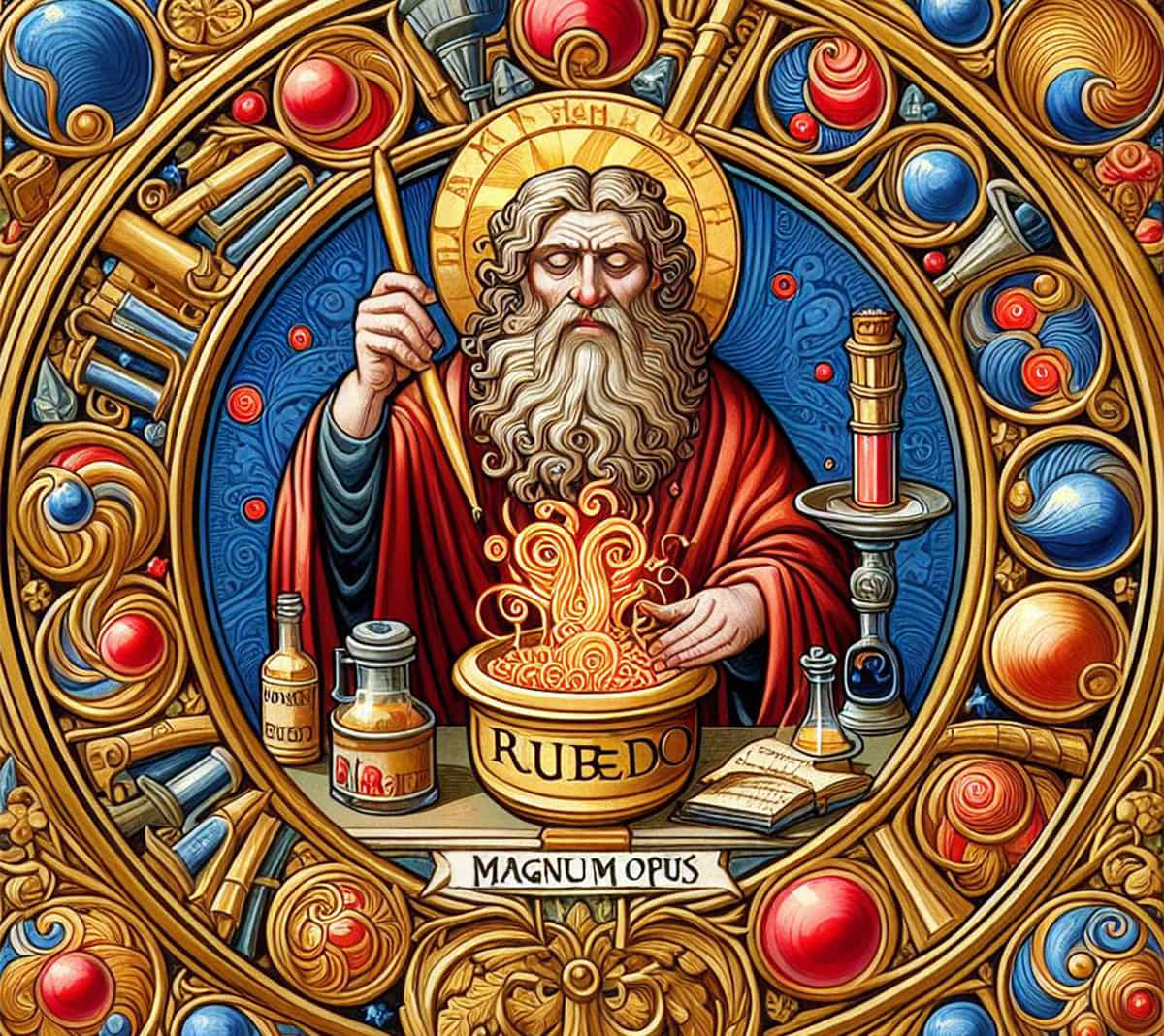Magnum Opus in Alchemy
In alchemy, the Magnum Opus refers to the process of working with the prima materia to create the philosopher's stone. The process has four stages: nigredo (blackening), albedo (whitening), citrinitas (yellowing), and rubedo (reddening).



